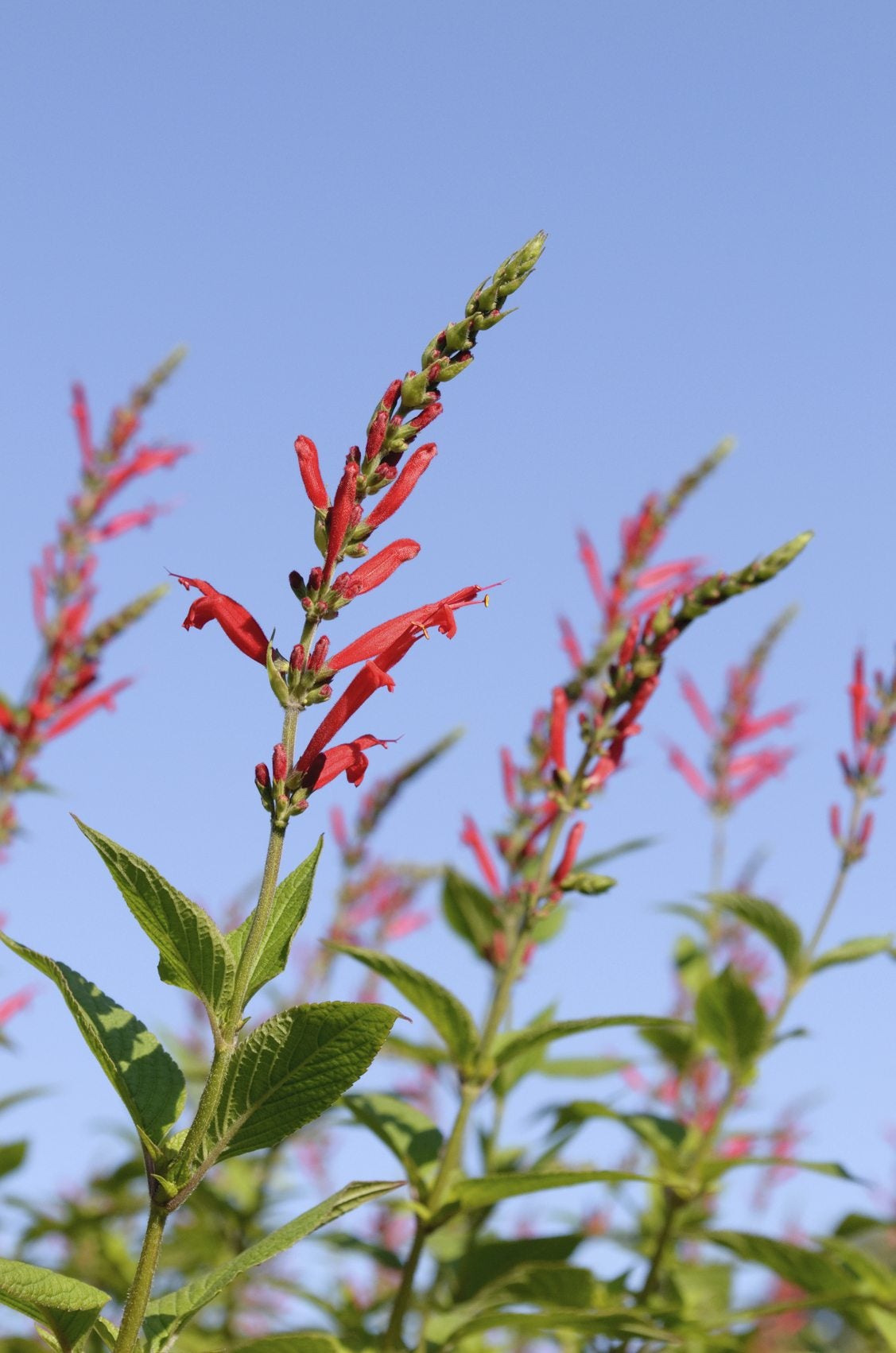Tangerine Sage Plant Info: How To Grow Tangerine Sage Plants


Tangerine sage plants (Salvia elegans) are hardy perennial herbs that grow in USDA plant hardiness zones 8 through 10. In cooler climates, the plant is grown as an annual. Highly ornamental and relatively speedy, growing tangerine sage couldn’t be easier, as long as you meet the plant’s basic growing conditions. Read on to find out how to grow tangerine sage.
Tangerine Sage Plant Info
Tangerine sage, also known as pineapple sage, is a member of the mint family. This is a good time to mention that although not as wildly invasive as many of its mint cousins, tangerine sage can be somewhat aggressive in certain conditions. If this is a concern, tangerine sage is easily grown in a large container. This is a good-sized plant, topping off at 3 to 5 feet (1-1.5 m.) at maturity, with a 2 to 3 foot (61-91 cm.) spread. Butterflies and hummingbirds are attracted to the red, trumpet-shaped flowers, which appear in late summer and autumn.
How to Grow Tangerine Sage
Plant tangerine sage in moderately rich, well-drained soil. Tangerine sage thrives in sunlight, but also tolerates partial shade. Allow plenty of space between plants, as crowding inhibits air circulation and may lead to disease. Water tangerine sage as needed to keep the soil moist after planting. Once the plants are established, they are relatively drought-tolerant but benefit from irrigation during dry weather. Feed tangerine sage plants with an all-purpose, time-release fertilizer at planting time, which should provide nutrients to last throughout the growing season. If you live in a warm climate, cut tangerine sage plants to the ground after blooming ends in autumn.
Is Tangerine Sage Edible?
Absolutely. In fact, this sage plant (as you may have guessed) has a delightfully fruity, citrus-like aroma. It is frequently incorporated into herbal butter or fruit salads, or brewed into herbal tea, much like its minty cousins. Other uses for tangerine sage include dried flower arrangements, herbal wreaths, and potpourri.
Sign up for the Gardening Know How newsletter today and receive a free copy of our e-book "How to Grow Delicious Tomatoes".

A Credentialed Garden Writer, Mary H. Dyer was with Gardening Know How in the very beginning, publishing articles as early as 2007.